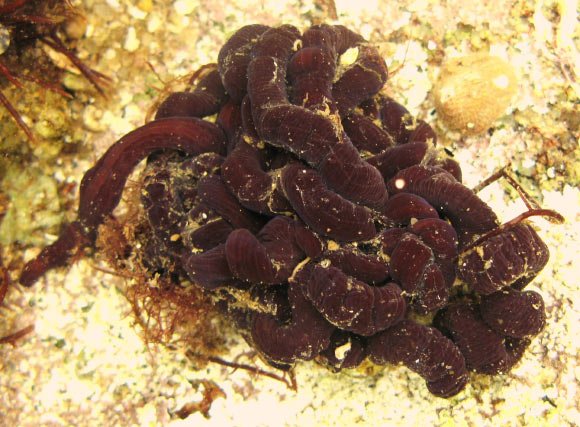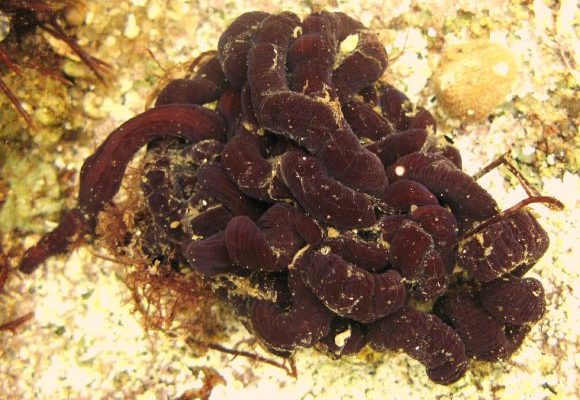
Bootlace worms can be quite a sight, stretching several meters long and swirling like colorful ribbons underwater. Their color variations are so pronounced that scientists can almost predict where these worms are found based on their colors. So, if you’re curious about how geography influences the look of these intriguing creatures, let’s dive deeper.
What Are Bootlace Worms?
Bootlace worms are fascinating animals that belong to the group of marine animals called ribbon worms. They can be found in various ocean environments, from shallow coastal waters to deeper parts of the sea. These worms can grow incredibly long—some reaching lengths of over 30 meters (about 100 feet)! They have a soft, flexible body that allows them to move efficiently through the water and mud.
What’s really neat about bootlace worms is their ability to change color, which helps them blend into their surroundings. This is an important survival trait. If a predator comes along, being the same color as the ocean floor or coral can make these worms harder to spot. You might be wondering, “How does this color change work?” Well, their bodies have special pigments. Depending on the environment, these pigments can change and create different colors, from earthy browns and greens to vibrant yellows and blues.
The Role of Geography in Color Variation
Geography plays a big part in how bootlace worms look. Just like how people in different regions might wear different clothing styles based on their culture, bootlace worms adapt their colors based on their habitat. For example, worms found in muddy environments near the coast might appear darker due to the muddy sediment surrounding them, while those living in sandy areas could be lighter.
You might find it interesting that temperature and sunlight also affect their color. In shallower waters where sunlight penetrates, worms might develop brighter colors to camouflage among the colorful corals and seaweed. It’s kind of like how you might wear brighter dresses in summer and darker colors in winter!
Common Color Variations
Different regions produce various color variations among bootlace worms. Here are a few prominent ones you might come across:
- Brown and Green: Common in muddy coastal areas where they blend in with the substrate, helping them hide from predators.
- Yellow and Orange: Often found where there’s a lot of coral, these colors help them blend in with the coral’s bright hues.
- Blue and Purple: Some species in deeper waters take on these vibrant colors, which may help reflect certain wavelengths of light.
- Striped Patterns: In some regions, you might see stripes that help break up their outline, making them harder to detect.
Each of these color variations plays a role in survival, allowing bootlace worms to adapt effectively to their specific locales. Isn’t it fascinating how these creatures can change based on where they are?
Why Color Matters for Survival
The color of a bootlace worm isn’t just a pretty feature—it’s a crucial part of their survival strategy. Being able to camouflage means they can avoid being eaten by predators like fish and crabs. For example, a bright orange worm in a coral-rich area is less likely to be spotted by a predator that is looking for more muted colors.
You might think, “Can they really change color that quickly?” The answer is yes, to some extent. While their base color often reflects their environment, they also have the ability to slightly adjust their color based on their immediate surroundings. It’s like when you wear a jacket that matches the colors of leaves in fall—you’re blending in!
Comparing Bootlace Worms Across Regions
Let’s take a closer look at how bootlace worms vary from one geographic location to another. In the North Atlantic, for instance, you might find bootlace worms that are mainly brown or green, perfectly suited to the rocky and muddy substrates. Meanwhile, regions like the Caribbean are home to brighter-colored bootlace worms, often showcasing beautiful yellows and reds thanks to the vibrancy of coral reefs.
This contrast in appearance is not just a delightful observation; it reflects the adaptability of these creatures. Each color scheme tells a story about the specific challenges and opportunities in their environment. From finding food to avoiding predators, the colors of bootlace worms are a testament to the power of evolution and adaptation.
Researching Bootlace Worm Color Variations
Scientists study these color variations not only to understand the worms better but also to learn about marine ecosystems as a whole. By identifying what colors are prevalent in certain areas, researchers can infer information about the health of these environments. For instance, if a specific region’s bootlace worms are all losing their vivid colors, it could signal a problem, such as pollution or habitat degradation.
You might wonder how researchers collect this information. Often, they conduct surveys in various locations, documenting the colors and conditions of bootlace worms. This data helps them create a detailed picture of how these creatures fit into larger ecological systems and how they are influenced by environmental changes.
Bootlace worms are more than just intriguing ocean dwellers; they are a stunning example of how life adapts to its environment. Their color variations across geographic ranges tell us stories of survival, evolution, and the interconnectedness of marine life. So the next time you see a worm in the ocean (or even in the garden!), take a moment to appreciate the beauty of diversity and adaptation in nature.
Whether you’re a marine biologist or just someone fascinated by the ocean, bootlace worms remind us of the wonders that exist beneath the waves and the importance of preserving our natural habitats. Nature is full of surprises, and these colorful worms are just one of the many examples of how life finds a way to thrive and adapt.

